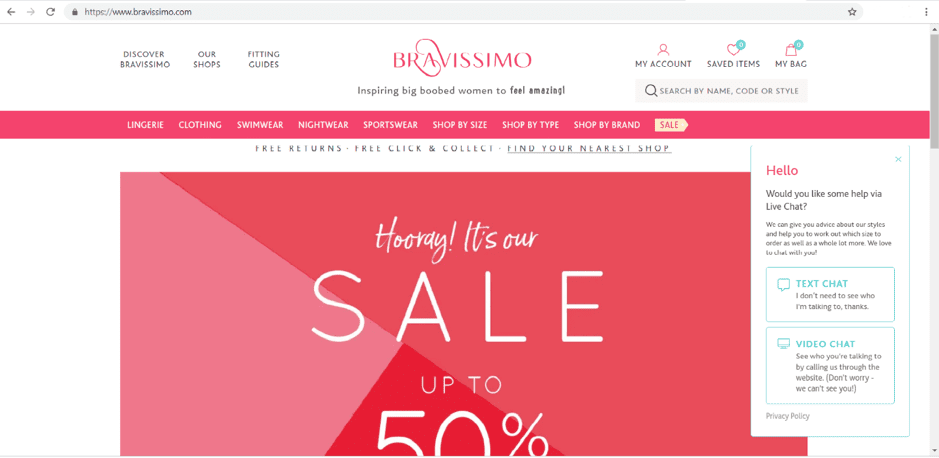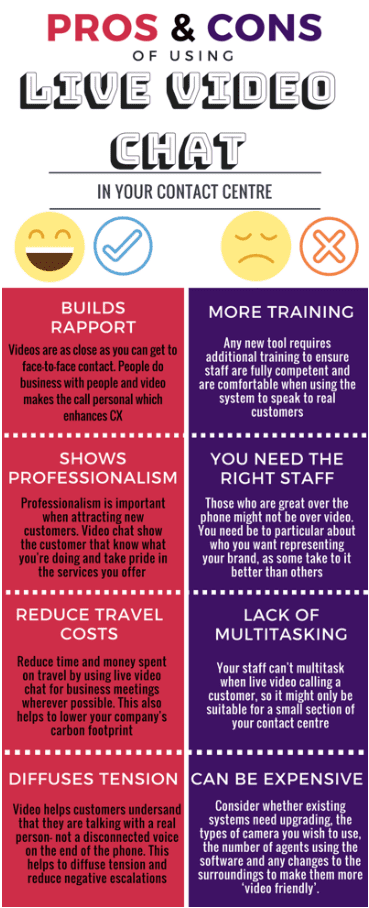Is your business equipped to offer customers personalized experiences across multiple channels?
In the era of instant communications and instant gratification, relationships between businesses and customers are changing. Driven by customers’ need for personalized and seamless interactions, brands are constantly adopting new communication channels, which allow them to reach customers at any stage of their purchasing journey.
Making a purchase nowadays is easier than ever as customers can go from discovering a product on Instagram to an online checkout system in less than a minute. With 51% of UK’s consumers saying they prefer to shop online, the pressure is on for businesses to engage customers in high-touch point, more personalized interactions.
If that is the case, then how can online businesses succeed in offering multichannel customer service that can not only drive sales but create bespoke customer experiences?
The key is human-powered online communication.
In recent years, video calling has become a preferred way for customers to interact with a company – and for good reason. The urgency to deliver great customer service prompted more than 100 of the 500 largest global businesses to introduce video-based customer service in 2018. Being the closest equivalent to face-to-face communication online, the solution enables customers to interact with a customer service agent in real time, without having to interrupt their browsing session.
In 2019, video-empowered communication will comprise an even bigger part of businesses’ multichannel customer service strategy. If you are looking to bring an additional degree of personalization to your customer interactions and provide agents with a unified view of their buying journey, then read further on to discover how video calling would enable you to do so.
Offering a personalized shopping experience
Picture this: you walk into a store to return a pair of shoes when you set your eyes on the perfect winter coat. However, your lunch break is almost over and you don’t have the time to go and try it on. How convenient would it be if you could go online later, from the comfort of your own home, and have a customer service agent give you a closer look of the coat’s fabric and fit?
Well, with video calling, many businesses are now offering this service on their websites. The UK’s leading lingerie retailer, Bravissimo, has adopted live web chat and video calling to offer customers a real-time view of their products, enabling them to get an accurate idea of the size and fit of an item they are interested in.

Combined with other solutions for real-time communications, such as live web chat or web calling, video calling has enabled retailers to replicate the in-store shopping experience online. Agents are now able to perform as traditional shopping assistants, providing online customers with a comprehensive overview of a product or with fitting advice based on their individual requirements.
Video calling enables customers to receive real-time, personalized customer service on any device, at a time and place of their choice. As customers’ expectations for the quality of their brand interactions increases, businesses that offer support across multiple platforms will have a significant advantage over their competitors.
From multichannel to omnichannel communications
Multichannel customer service means that businesses can communicate with their clients across various channels, including via a phone call, email, or using direct messaging on social media. As communication technology evolves, however, these capabilities are considered not as a novelty, but as a necessity for satisfactory customer service.
Managing multiple communication channels can be tricky since customers expect to receive the same quality of service, whether they choose to contact you via Facebook Messenger, live web chat or email. This is where an omnichannel communication strategy can be more beneficial. It enables businesses to streamline the customer experience across both digital and physical channels, which will create a unified view of your brand in the customer’s eyes.
By implementing solutions such as video calling and live web chat, customers can move seamlessly from one contact channel to another without having to disrupt their online journey. Being able to escalate an interaction from chat to voice and video can greatly improve the customer experience. In the case of Bravissimo, it has reduced the contact centre abandonment rates by up to 70%.
While omnichannel communications can require a significant investment in increasing the agent workforce and maintaining consistent branding across channels, this strategy can be a game-changer when it comes to facilitating customer loyalty and differentiating your businesses from the competition. Regardless of the number of channels your business manages, customers view your brand as one unit and they expect all the channels to be connected. With omnichannel customer service, you will be able to meet these expectations of your brand as one unified whole.
Empowering customer service agents
Regardless of how good their communication skills are, contact centre agents can only be as effective as the technology available to them. Nowadays, having outdated telephony systems and disregarding the importance of online communication will not only put you in a disadvantageous position compared to your competitors, but it would also prevent your support agents from establishing personalized, long-term customer relationships.
Adopting solutions for real-time communication will help you avoid this. The customer data gathered through live web chat or web calling can be combined with the opportunities for personalization of video calling. This means that agents get a greater insight into the customer journey and are better equipped to deliver bespoke customer experiences.
In order to make the most out of a video calling solution, agents within the contact centre need to receive the necessary training that would enable them to handle customer requests efficiently. This could include:
- Body language training
- Visual cues training
- Sign language training, if you work with deaf/hard of hearing customers
Agent training is one of the main costs associated with implementing a video calling solution. However, it is a worthy investment that can improve the overall efficiency of the agents, especially when it comes to managing interactions across multiple channels.
Improving customer engagement
At this point, most businesses have already realized the importance of offering multichannel customer service that allows customers to engage with a brand across both offline and digital platforms. While this has made the shopping experience much more streamlined and convenient, it has also increased the complexity of the interactions between customers and brands.
If a customer’s buying journey starts on social media, goes through to your online website and finishes in the brick-and-mortar store, how can brands ensure they provide effective support at every stage of the shopping experience?
- 57% of customers feel more confident in making a purchase after watching a product demo.
- 50% of customers are more inclined to engage with a retailer who makes video content about their products.
Video calling can be the solution that glues the fragmented customer journey together. It offers the opportunity for the whole customer experience to be brought online, with real-time product demos giving the customer a 360-degree view of a product, creating a shopping experience resembling an authentic in-store one.
What these statistics reveal is that customers have already embraced the benefits of video and are expecting businesses to have done so as well. Therefore, it is time for brands to take the next step and offer not just pre-recorded material, but real-time video interactions. This will not only help you unify the multichannel customer experience but will also encourage customer loyalty, as 80% of shoppers are more likely to return to a business when they have had a personalized, seamless experience.
Are there any cons to video calling?
Clearly, there are numerous ways in which video calling can improve the quality of your multichannel customer service. However, it is worth mentioning some of the difficulties you might encounter during the early adoption stages. In addition to agent training, video calling may require existing software systems to be upgraded or new camera equipment to be purchased.
Furthermore, the personalized nature of video calling suggests that agents need to spend more time interacting with customers, which could potentially jeopardize the ability of agents to handle a large volume of enquiries. Preparing for these challenges in advance will ensure the smooth integration of video calling within your contact centre.
To sum up
Multichannel customer service is all about providing customers with the freedom to decide on how they would like to communicate with a brand. However, it also requires businesses to join up their communication channels in order to gain a comprehensive, single customer view. Video calling, in combination with other real-time communication solutions such as live web chat and web calling, makes it easier to provide personalized customer support all within the browser, making for a seamless and unified customer experience.
With the personalization of face-to-face communication and the data insights from online interactions, video calling combines the best of both worlds, offering an additional platform for brands to understand and support their customers.



